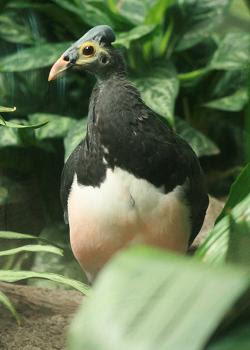 |
| Loads and loads of native trees, reaching for the sky. |
I love trees. Now I know what you're thinking: "C'mon, David. You've always loved trees. You didn't just learn that this semester." And that would in fact, be true. But this semester, I learned I really, really, really love trees. Like a lot. And I've been in a sorry state, because since I moved into my new home a few years back, there have been none on my property. But no more! Last year I started growing oak seedlings, and some of them actually made it through the winter. Combine that with all of the volunteer saplings that I pick from my yard before I mow, and the count goes up even higher. But these little guys will need a lot more time to grow before they are placed in their permanent home. Which is why I'm so pleased that I was able to procure some larger, older trees this semester. Mixed oaks and maples, a few sycamores and birches, redbuds, elms, the works. All ready to go in the ground, all native. One day my backyard will look more like a miniature forest, which is fine with me. I mean, who doesn't love a good tree? I know this semester, I learned I certainly do.














